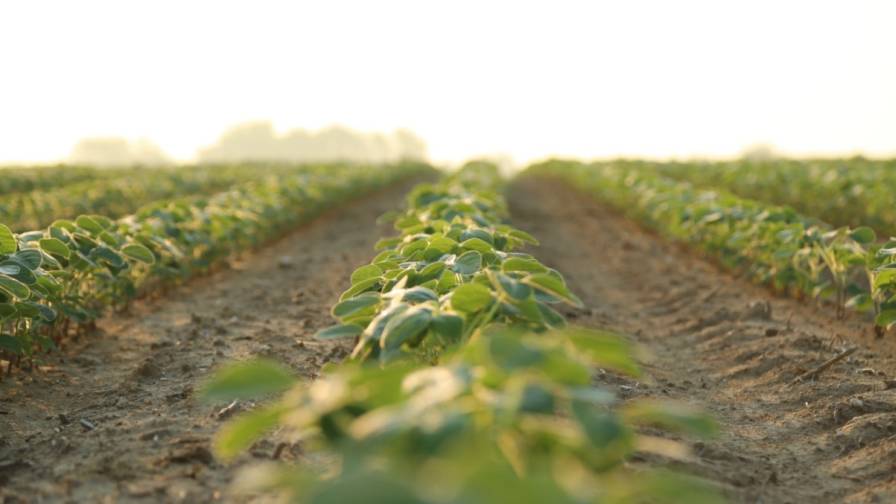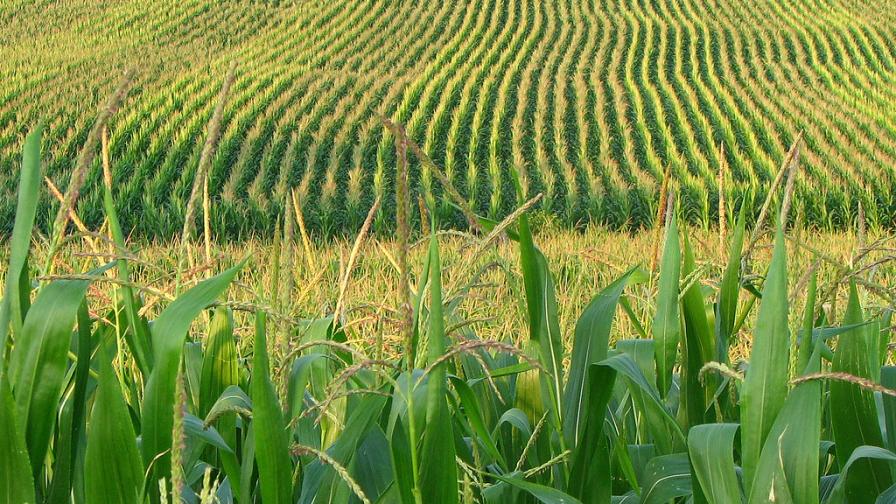Purdue Experts: Time Left To Rebound From Drought
Indiana farmers and livestock producers still can recover from one of the earliest onslaughts of extremely dry conditions in more than two decades, but that time is growing short for some, Purdue University agricultural experts say.
While drought so early in the year is drying out crop fields and forages, they say it’s not time to hit the panic button – yet.
“Clearly, there are some truly severely stressed regions of the state,” said Bob Nielsen, Extension corn specialist.” But if you look at the state as a whole, the corn has hung in there amazingly well.”
Corn in Indiana will begin a crucial period for its development in late June and the first half of July – pollination. Insufficient water during pollination can significantly reduce the amount of corn the crop produces by harvest in the fall. Corn in a few fields in southern Indiana already has started to pollinate.
“The big concern now is as we approach pollination statewide,” Nielsen said. “We can lose an awful lot of yield potential per day with drought stress during pollination.”
Although dryness is not uncommon in Indiana in the summer, it is unusual for drought to hit in the spring as it did this year soon after farmers planted corn and soybeans, annually the state’s two biggest crops.
“It is among the earliest onsets of severe, dry weather we’ve had in at least the last 25 years or so,” Nielsen said.
Farmers and agricultural economists harken to 1988, when a season-long drought devastated crops, and to 1991, which also saw major reductions in yield because of drought.
While only 37 % of this year’s Indiana corn crop was rated good to excellent as of June 17, less than 5% of the 1988 crop had that rating by then. Yields that year ended up 31% below the predicted trend yield for that year.
In 1991, when drought began later in the growing season, about 75% of the crop was good to excellent in mid-June. But by the first week of August, it dropped to below 10%, leading to a crop that was 27% below trend.
“Crop condition ratings at this point are nowhere as bad as they were in 1988,” Nielsen said. “That’s the good news. The bad news is that we’re already worse than we were in 1991.”
Nielsen said it was still possible for the corn crop to produce yields close to trend, but it would need widespread and timely rains now and for the remainder of the season.
“We don’t want a repeat of ’88 and ’91,” he said. “It’s not a disaster yet. We still have opportunities to recover. There has been yield loss that we won’t recover, but I don’t think it has been dramatic yield loss.”
Agricultural economist Chris Hurt estimated that dry conditions already could have trimmed 15 bushels of corn per acre in Indiana yields relative to the five-year trend and projections from early planting. He projects that farmers could produce about 151 bushels per acre, down from his estimate of 166 at the start of the growing season.
With Indiana being a high-production state nationally, projected yield losses are beginning to move corn prices upward, Hurt said.
And, he added: “It won’t take much more damage before we see the corn market start to really light up.”
Hurt projects the potential of Indiana soybeans to fall to about 45 bushels per acre, down from 49 at the start of the season.
Soybeans that were planted early in the season – in April and early May – are faring better than those planted in mid-May when the dry spell began, said Extension specialist Shaun Casteel.
But soybeans that have just barely emerged and look stagnant for several days or longer might not be so bad off. That is because beans are putting their energy into developing their roots in these dry conditions rather than their shoots, Casteel said.
Although soybeans can withstand dry conditions longer than corn, he said bean plants that are severely stressed by drought will produce fewer nodes, reducing yield.
“But beans can compensate,” Casteel said. “If we get timely rains in July or August, we can make up a lot of ground with pod retention and seed size. This is provided those plants are at least sustaining themselves during the current dry period. “
Indiana has had less rain than normal because of continued high pressure and lack of moisture from the Gulf of Mexico, the state’s primary source of moisture, according to the Indiana State Climate Office, based at Purdue. That has lowered humidity to the point where rain from the West can evaporate before reaching the ground.
Compounding the problem is the insufficient moisture Indiana received in the winter, said state climatologist Dev Niyogi.
“Entering the growing season, we have low soil moistures and reserves to begin with due to the warm winter, and the soil continues evaporating and losing water rapidly,” Niyogi said. “The rains we may get in parts can help, but planning with drought in mind will be a judicious strategy at this point.”
A storm front packing rain was forecast to move into Indiana late this week. Aside from that, Niyogi did not expect much to change in the next couple of weeks, with dry areas continuing to get drier.
“So, unless storms in coming weeks bring good rains, we could be in it for the long haul,” he said.
Latest developments in crop-related news is available at the Chat ‘n Chew Cafe.






